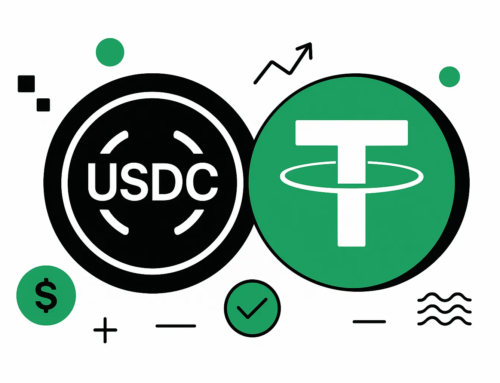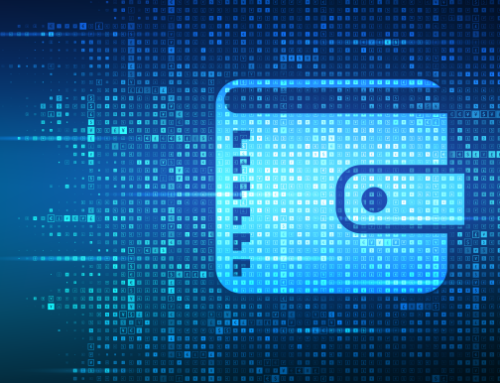The internet is one of the most significant technological revolutions in the history of humankind. This industry has been evolving significantly since its inception, 20 years ago, yet still presents a wide room for innovation. From Steve Berners-Lee’s internet where the majority of the users were typical consumers, to the anticipated fully decentralized web.
web 3.0 brings the promise of decentralization, blockchain technology, and turning users into owners. The web 3.0 refers to the evolution of the internet that we know, and its main characteristic is that it will be a decentralized internet and for that, it will use blockchain technology, which made possible everything the world keeps talking about: NFTs, cryptocurrencies, or decentralized finance.
The history of the Internet is usually divided into these three stages, which can help us to understand where the Internet is going. Web 1.0, which runs from 1991 to 2004, is read-only: most of the participants were content consumers. The protocols were open, decentralized, and under the governance of the community. The explosion of web 2.0 brings social networks and interactivity with the user, who creates a good part of its content. It is the era of companies like Facebook, Google, Apple, Amazon, creating centralized silo services, dependent on these corporations. Here the paradox arises that users create, but it is technology companies that monetize. Now comes Web 3.0: the promise of a website where the user is once again at the center as the creator, but above all as the holder, as the owner of those creations, being the one who monetizes.
Web 1.0
In 1989, Tim Berners-Lee invented World Wide Web (www), which was to be a collaborative medium where people could share information by writing and reading. The interconnected computer system, which was primarily intended to facilitate information sharing among the scientists, would soon be dominated by a few companies such as AOL (early Yahoo), CompuServe, and other portals. The involvement of these online service providers gave rise to Web 1.0 – the first iteration of the web. Individuals, businesses, and governments began consuming the web – occasionally posting content. In 1994, Netscape launched its web browser triggering the dot-come explosion and the rise of browsers. Web 1.0 contents are more static, including texts and images. Additionally, sites lack much interactivity. This era of the internet can be marked, approximately between 1991 and 2004.
Web 2.0
Web 2.0 brought the idea of “the web as a platform.” Unlike the previous iteration, web 2.0 iteration allows the building of software applications upon the web instead of upon the desktops. Many web pages are more dynamic, with full-featured applications. It also enables mass users to take part in content creation, which they can upload to blogs, video or image-sharing websites, and social networks. The rise of social media and search engines are driven by user-content, such as Facebook, Google, and Amazon, interrupted the advertising, media, and retail industry. The major challenge of this iteration springs from its centralization nature and includes the unethical exploitation of data. Web 2.0 began in about 2004 and continues to the present day.
Web 3.0
Web 3.0, or web3 is the latest iteration in the evolution of the internet. It is a game-changer, introducing decentralization to the web. With web 3.0, users do not need permission from a central authority to post anything on the internet since there are no controlling nodes.
The inception of web 3.0 is credited to the rise of technologies such as the distributed ledger, artificial intelligence (AI), and Machine Learning (ML). Blockchain technology allows for data decentralization, transparency, and security, which is impossible with web 2.0 centralization.
If it is an evolution of web 2.0, why is it often referred to as web3? Some, like the science fiction writer, Robin Sloan, claim the name could come from web3.js, a collection of modules to interact with Ethereum nodes using different protocols (Ethereum is a blockchain that was born with the aim of improving the Bitcoin capabilities to include programming capabilities that could lead to the creation of smart contracts). Web3.js would allow interaction with an ethereum blockchain and this would link, in a certain way, web3 with Ethereum.
Web 3 Key Features
Decentralization
Data decentralization is the defining feature of the latest phase of the web. In the former iteration, the information is stored and managed by a central authority (through a single server). Such information is vulnerable to cyber-attack and manipulation by the central authority. With Web 3.0, the information is stored and managed with numerous computer nodes, hence eliminating a single target point for attack and manipulation.
Trustless and Permissionless
Web 3.0 is trustless, allowing users to interact directly without going through the intermediary. It is also permissionless, that is, anyone can participate in data authorization and management. Therefore, this phase of the web can only run on blockchains, peer-to-peer decentralized nodes, or a combination of both – decentralized applications (dapps).
Artificial Intelligence and Machine Learning
Although artificial intelligence is not a salient feature of Web 3.0 (it was introduced in the Web 2.0 era), it still plays a significant role in its development. Computers in the latest era of the web can understand information more like humans, through Semantic Web concept and natural language processing technologies. Computers also use machine learning to imitate how humans learn gradually to improve their accuracy. Such computers can produce faster with minimal human input.
Cryptocurrency is one of the major innovative applications of Web 3.0. The decentralized currency is significant for the stability and security of decentralized networks since it provides a financial incentive for participants.
Advantages of Web 3.0
Improved web security – decentralized networks are more secure and almost immune to cyberattacks.
Boosted transparency – Web 3.0 is decentralized, meaning the data is available for the public audit.
Data extraction elimination – decentralization will break down massive databases currently held by internet giants such as Google and Meta, and restore data ownership to the users. It will allow these users to use their data as they wish, including monetizing them.
Lowered costs – Web 3.0 eliminates the intermediaries in web applications hence lowering the cost and time of transaction processing.
Disadvantages of Web 3.0
Legal and regulatory risks – cybercrime, misinformation, and hate speech can easily spread in the Web 3.0 environment since users are less regulated. Regulations and enforcement are difficult in Web 3.0, for example, it is difficult to implement a country’s laws to a specific website that is hosted in many countries across the world.
The Bottom Line
Web 3.0 is bringing us fairer internet where the individual users are sovereign. In some way, it is a return to the original plan by Tim Berners-Lee where one does not need permission to post an item on the web and no central authorities. However, Web 3.0 opens a new world of data monetization opportunities to individuals and data security. True sovereignty of individual users means they can control who profits from their time and information. However, the world still has regulation issues to deal with, even as we are shifting quickly to Web 3.0.








